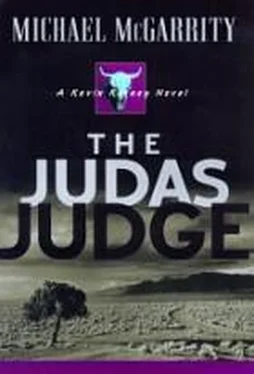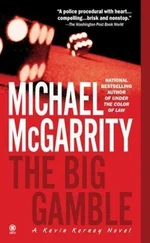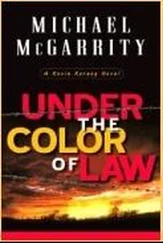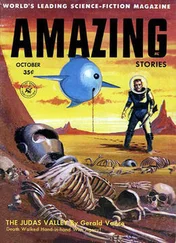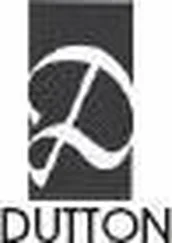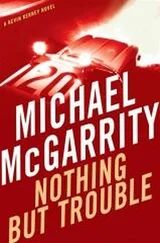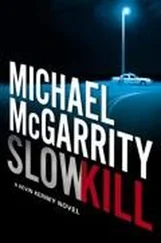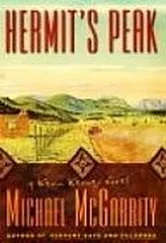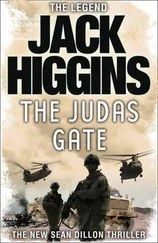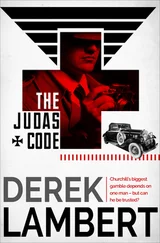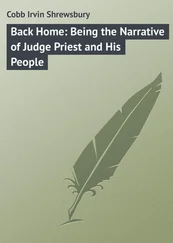Michael McGarrity - The Judas judge
Здесь есть возможность читать онлайн «Michael McGarrity - The Judas judge» весь текст электронной книги совершенно бесплатно (целиком полную версию без сокращений). В некоторых случаях можно слушать аудио, скачать через торрент в формате fb2 и присутствует краткое содержание. Жанр: Триллер, на английском языке. Описание произведения, (предисловие) а так же отзывы посетителей доступны на портале библиотеки ЛибКат.
- Название:The Judas judge
- Автор:
- Жанр:
- Год:неизвестен
- ISBN:нет данных
- Рейтинг книги:5 / 5. Голосов: 1
-
Избранное:Добавить в избранное
- Отзывы:
-
Ваша оценка:
- 100
- 1
- 2
- 3
- 4
- 5
The Judas judge: краткое содержание, описание и аннотация
Предлагаем к чтению аннотацию, описание, краткое содержание или предисловие (зависит от того, что написал сам автор книги «The Judas judge»). Если вы не нашли необходимую информацию о книге — напишите в комментариях, мы постараемся отыскать её.
The Judas judge — читать онлайн бесплатно полную книгу (весь текст) целиком
Ниже представлен текст книги, разбитый по страницам. Система сохранения места последней прочитанной страницы, позволяет с удобством читать онлайн бесплатно книгу «The Judas judge», без необходимости каждый раз заново искать на чём Вы остановились. Поставьте закладку, и сможете в любой момент перейти на страницу, на которой закончили чтение.
Интервал:
Закладка:
"This is a first for me. I've never been asked by the police to verify weather conditions. It must be important. What kind of case is it?"
The man's interest put Kerney's guard up. He didn't need a TV weatherman passing along a hot tip to the newsroom staff. "It's an internal matter."
Recognition showed on the man's face. "Wait a minute, aren't you the officer who shot the state police sergeant in Alamogordo? Yeah, you are. Deputy Chief Kerney. Now I've got it."
"I'll let you get back to work," Kerney said, as he crossed to the door.
"Thanks for your help."
Behind him, Kerney heard footsteps. At the door, he glanced back and saw the man whispering to a young female reporter at a nearby desk. She looked at Kerney with blatant curiosity, reached for a notebook, and dogged him out of the building, calling his name and firing questions.
He made it to his unit without comment, waved, cranked the engine, and drove off. She trotted alongside the unit shouting questions as he picked up speed. In the rearview mirror he watched her slap the notebook against a leg in frustration and hurry back inside. He doubted that her interest in pursuing the story had cooled.
Senior Patrol Officer Tim Dwyer had a brisk, intelligent look, a self-confident manner, and a straightforward style. Had he been wearing a business suit instead of his state police uniform, Kerney would have pegged him as an up-and-coming corporate executive. One of a handful of accident reconstruction experts in the department, Dwyer was frequently used to handle complex vehicular investigations.
In a small office at the Roswell district headquarters, where Dwyer was assigned, Kerney laid out the facts and his suspicions surrounding Arthur Langsford's death.
Dwyer had greeted him with guarded detachment, which Kerney figured to be directly related to the Shockley incident and the back channel gossip about it circulating within the department. When he finished telling Dwyer want he wanted, the officer nodded curtly, asked for the accident report, and read it without comment. Kerney watched in silence as Dwyer spread Waxman's photographs, field sketch, and his field reconstruction drawing on the desk, and gave them a close look.
When he was done he stacked the paperwork in a neat pile and looked up.
"Ninety percent of all vehicle accidents are caused by driver error," he said. "This one fits the profile, but what made the driver swerve is anybody's guess. If those cardboard boxes were empty, the wind could have been blowing them back and forth across the road between the fence lines like Ping-Pong balls. Or maybe the driver was daydreaming or changing stations on the car radio."
"Waxman was wrong about glare blinding the driver," Kerney said.
Dwyer shrugged. "That takes away a contributing factor, but you can add a dozen more guesses. Like the driver's state of mind, for instance. Was the driver drunk, angry with a spouse, or pissed off at a boss? Since the driver left the scene and Waxman had no witnesses, his hypothesis was as good as any others."
"Am I spinning my wheels?" Kerney asked.
"The typical reason for leaving an accident scene is to avoid arrest. Beyond that, trying to determine driver intent gets real iffy, especially when there's a lack of physical evidence."
"Is it worth your time to take another look?"
Dwyer nodded. "I'll visit the site and rework Waxman's figures, just to make sure he did them the right way. Distance, speed, skid resistance, the radius of the curve, the coordinates-that sort of stuff."
"According to the highway department, the roadway hasn't been changed since the accident," Kerney said.
"That's good to know. I'm going to need to use the same reference points." Kerney's bum knee had locked up. He stretched his leg and rubbed the aching tendon. "There's nothing in the report that piques your interest?"
"One thing," Dwyer replied. "Waxman should've gone back to the accident scene the next day to re-photograph the skid marks in full light, and he didn't do it. These prints you brought along don't show me anything. For example, I can't tell where the skid marks changed. Without that, determining point of impact is almost impossible."
"Waxman's report says the driver braked ten feet prior to impact,"
Kerney said.
"I'd like to see the proof, and the pictures don't show it. Since it's still an open case, the sheriff's department should have the negatives in evidence. I'll get them, scan them into the computer, and do enhancements. It might tell us something."
"Good enough. Thanks for your help."
"Anytime, Chief."
Tim Dwyer watched Kerney limp out. He had wanted to ask why the chief deputy was working a homicide instead of running his division. And why was Major Hutchinson sitting in Kerney's office up in Santa Fe? Was Kerney on his way out, as many officers hoped? Or was the speculation true that Chief Baca was protecting his old friend's ass and retirement pension?
Dwyer decided he didn't want to know. He picked up the phone and dialed the sheriff's office.
Once a residence, the funeral home near downtown Roswell looked like a southern plantation manor house. A two-story portico was supported by large Georgian columns, and the building was painted a pristine white. It sat in the middle of a carefully manicured lawn enclosed by an ornate wrought-iron fence.
Kerney introduced himself to the funeral director and asked to see the guest book for Vernon Langsford, who was on display in the main viewing parlor.
"We've had literally hundreds of guests," Barry Bishop said as he handed Kerney the guest book. "I expect a great many more will come to visit before tomorrow's service."
Close to Kerney in age, Bishop had a puffy face, wore a suit jacket that hung loosely on his skinny frame, and spoke in hushed tones.
Kerney scanned the book. It would be impossible to attempt contact with everyone who'd been by to pay their respects. "When is the service?" he asked.
"Tomorrow morning at nine, with interment to follow," Bishop said, noting the name of the church.
"Has Ms. Langsford given you a preferred seating list for family and friends?"
"I'd like a copy."
Bishop's eyes stopped smiling. "Surely, you're joking."
"I can get a court order, if need be," Kerney said.
"That's not necessary. I'll get it for you." Bishop stalked into a office, returned with a typed piece of paper, and handed it over.
Twenty names were on the list. Kerney didn't recognize any of them.
"Do you know any of these people?" he asked. "Those who are local, I do," Bishop replied.
"Run them down for me," Kerney said.
"People are grieving," Bishop said stiffly. "I don't think this is an appropriate time to be conducting police interviews."
"Would you rather have me stop them for questioning outside the church?" Kerney asked.
Bishop blanched at the thought, and Kerney left with the lowdown on twelve of Linda Langsford's preferred guests.
Rather than wait for the evidence officer at the sheriff's department to find the film negatives and call him back, Tim Dwyer decided to use his time at the accident scene. The state highway was a major east-west artery and big trucks and motorists roared by in both directions, only marginally slowing down when they caught sight of the warning lights flashing on Dwyer's unit.
He parked at the bottom of the hill and walked up the asphalt shoulder.
At the top of the incline he looked down the road in the direction Arthur Langsford had been traveling. Even at top speed on a bicycle, coming out of the curve, the rider should have been able to stay on the shoulder, see the oncoming car, and make an adjustment. Waxman had made no mention of bike skid marks in his report, which Dwyer found interesting. The most common panic reaction to avoid a crash is to hit the brakes.
Читать дальшеИнтервал:
Закладка:
Похожие книги на «The Judas judge»
Представляем Вашему вниманию похожие книги на «The Judas judge» списком для выбора. Мы отобрали схожую по названию и смыслу литературу в надежде предоставить читателям больше вариантов отыскать новые, интересные, ещё непрочитанные произведения.
Обсуждение, отзывы о книге «The Judas judge» и просто собственные мнения читателей. Оставьте ваши комментарии, напишите, что Вы думаете о произведении, его смысле или главных героях. Укажите что конкретно понравилось, а что нет, и почему Вы так считаете.
